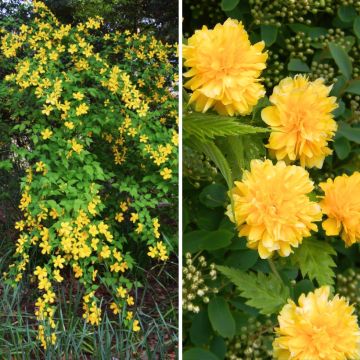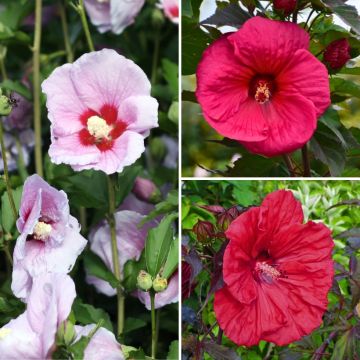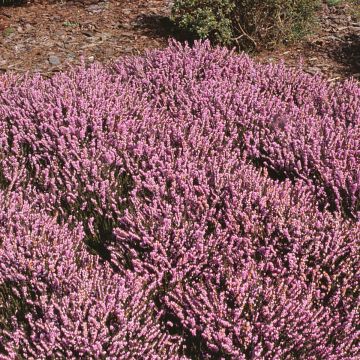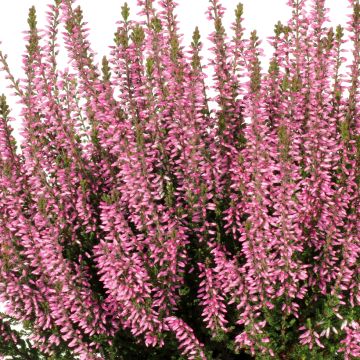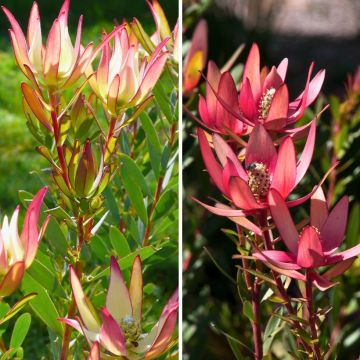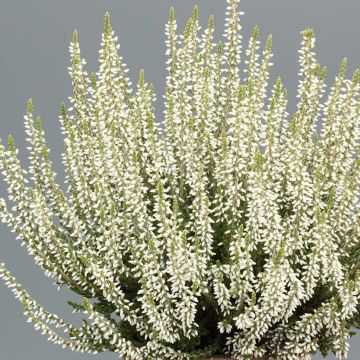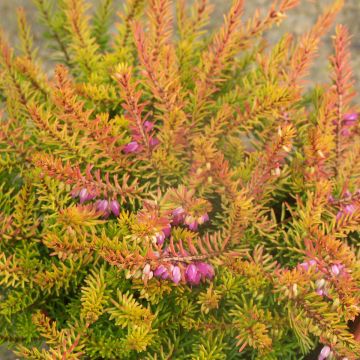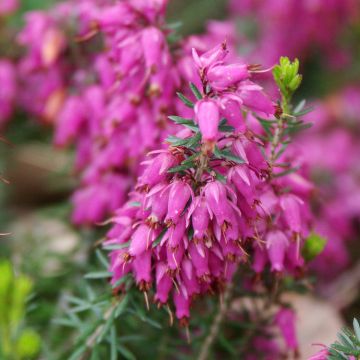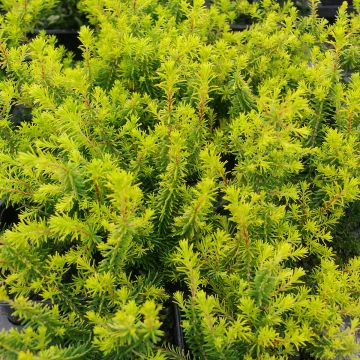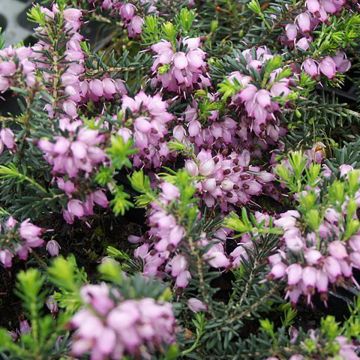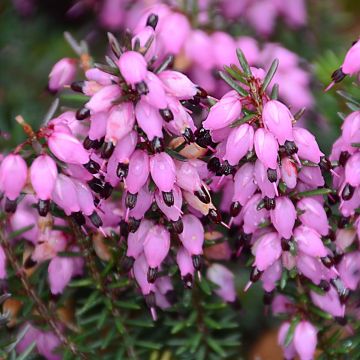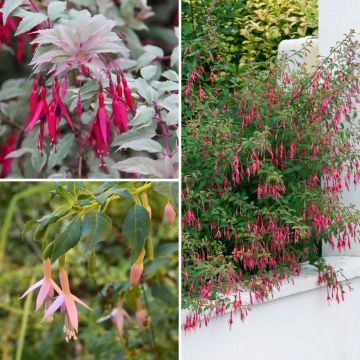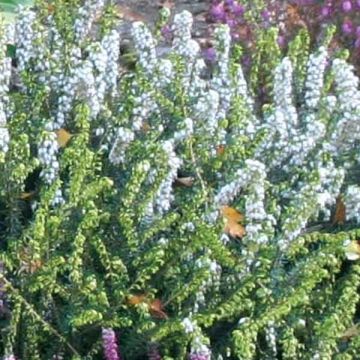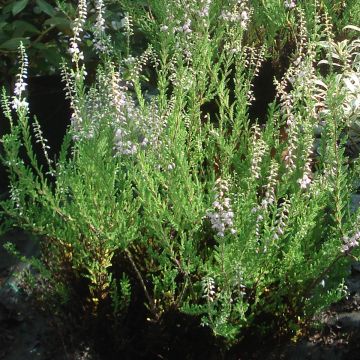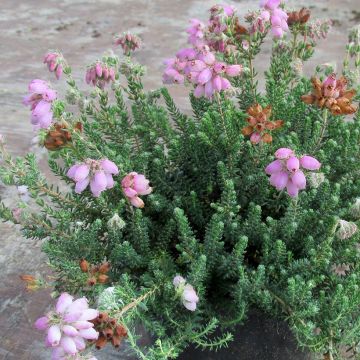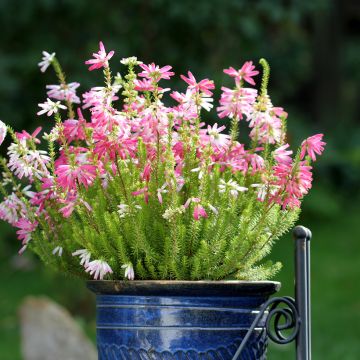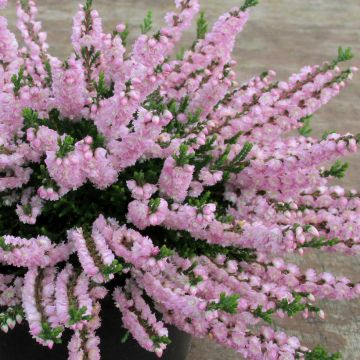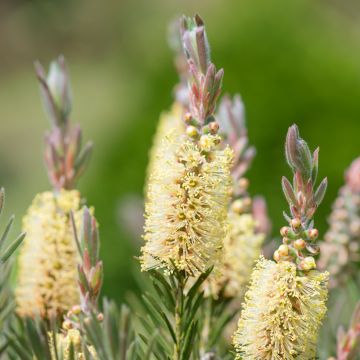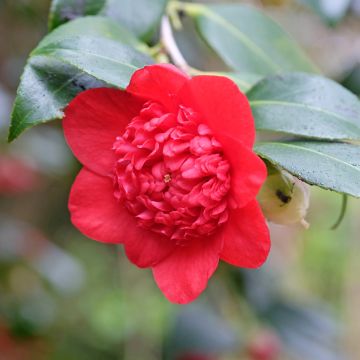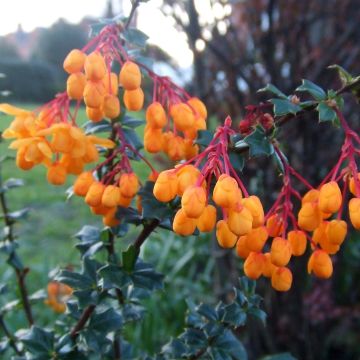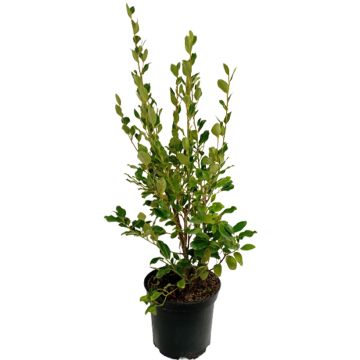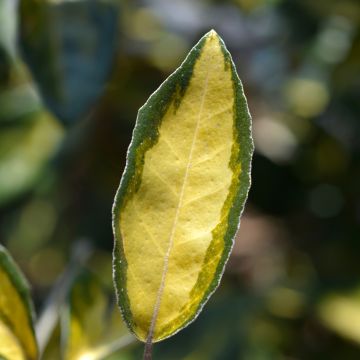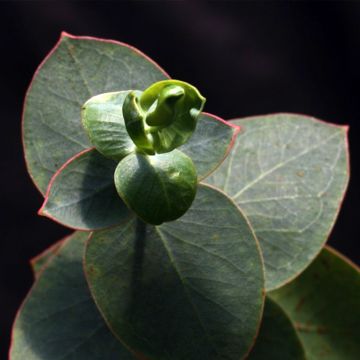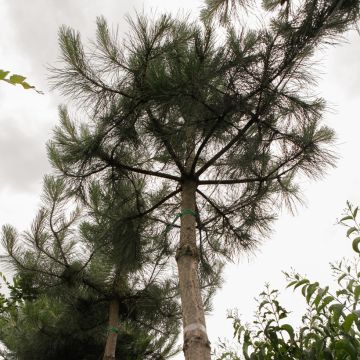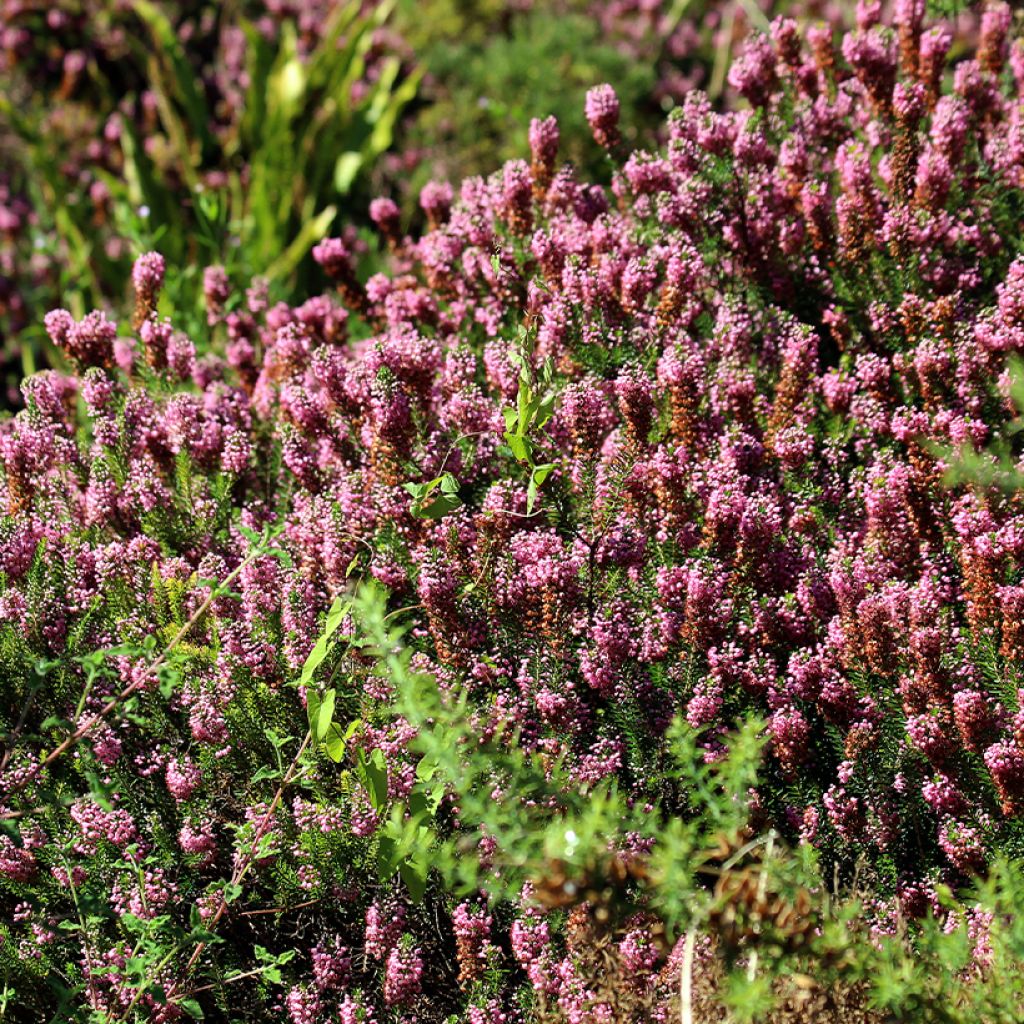

Erica vagans 'Diana Hornibrook'
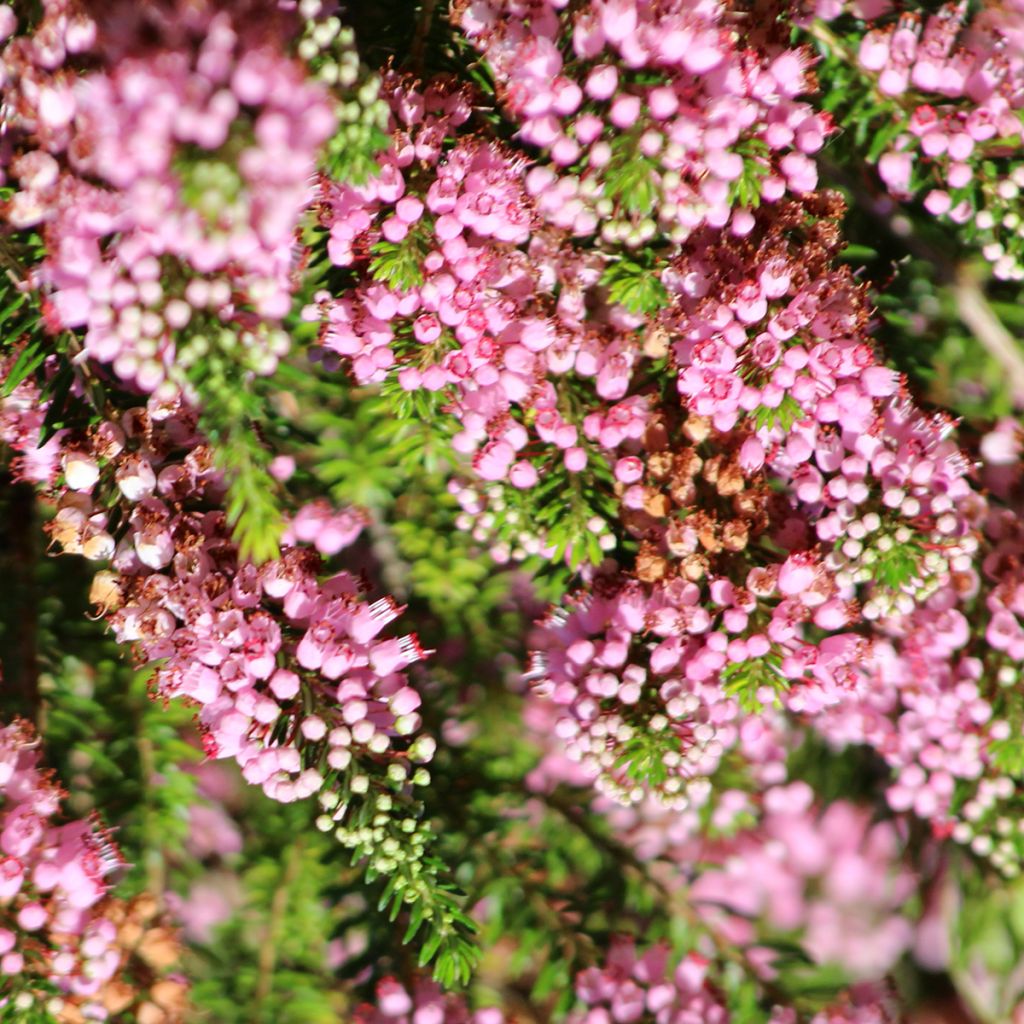

Erica vagans 'Diana Hornibrook'
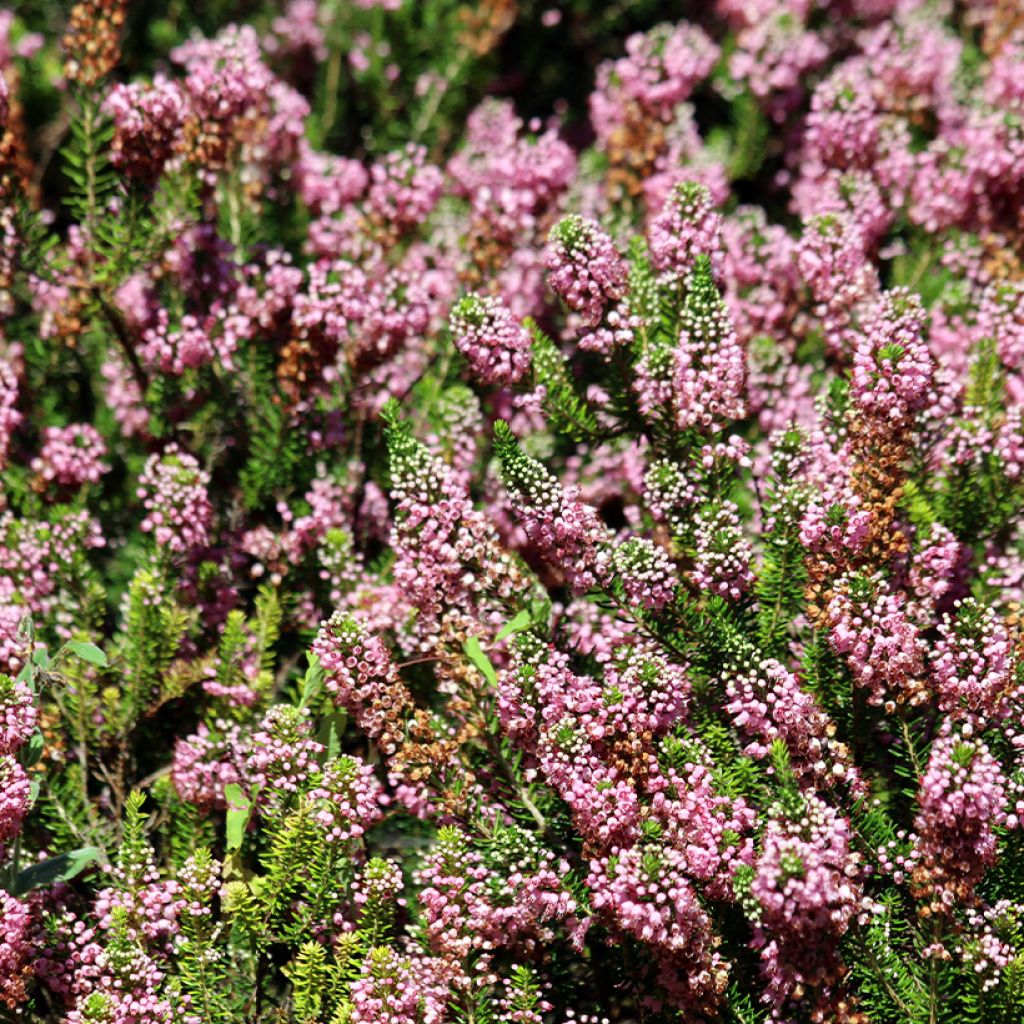

Erica vagans 'Diana Hornibrook'
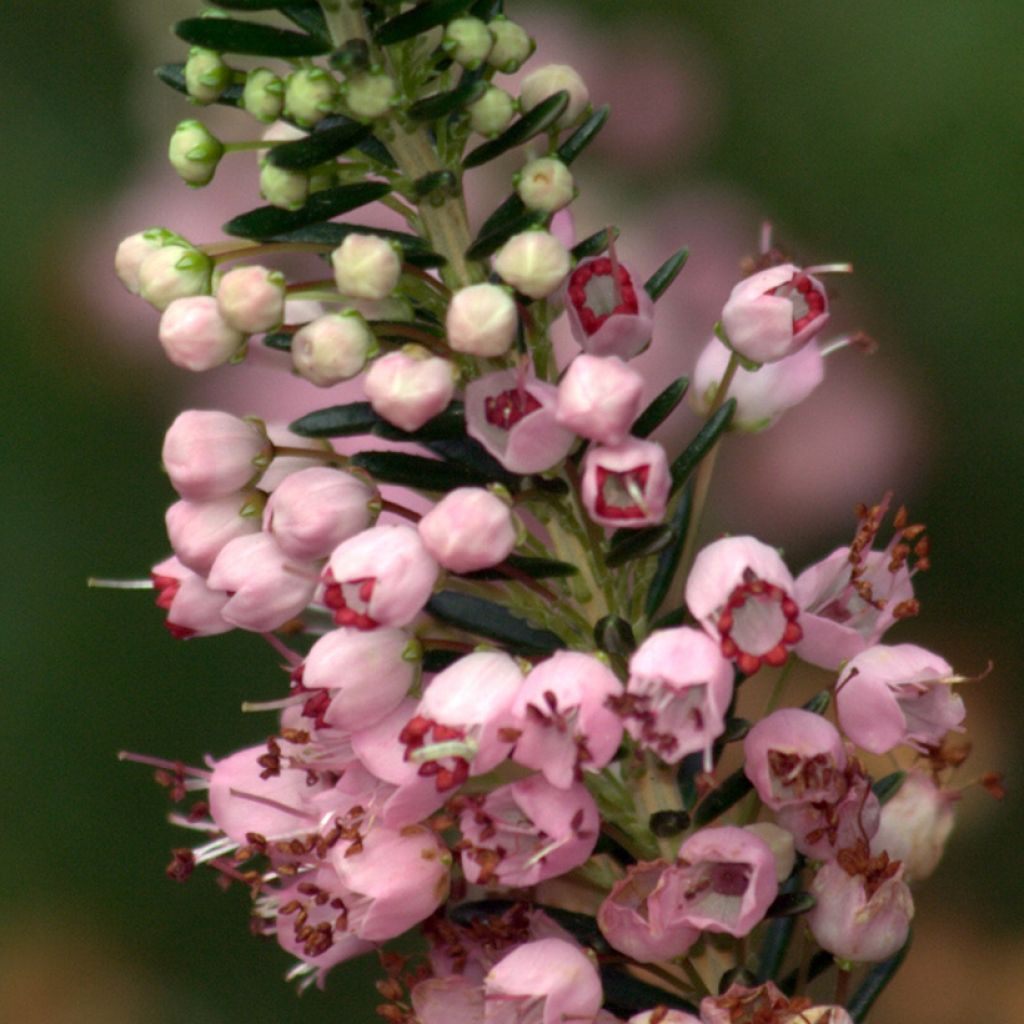

Erica vagans 'Diana Hornibrook'
Erica vagans 'Diana Hornibrook'
Erica vagans Diana Hornibrook
Cornish Heath
Why not try an alternative variety in stock?
View all →This plant carries a 24 months recovery warranty
More information
We guarantee the quality of our plants for a full growing cycle, and will replace at our expense any plant that fails to recover under normal climatic and planting conditions.
Does this plant fit my garden?
Set up your Plantfit profile →
Description
Erica vagans 'Diana Hornibrook' is a variety of wandering heather with a beautiful salmon pink summer flowering. Resembling a carpet, it stands out with its dense and compact vegetation, spreading growth, and dark green foliage all year round. Between July and October, the plant is covered in numerous dark pink spikes, adding brilliance to its flowering. When planted in mass, it will enhance a rockery or the edge of an acidophilous plant bed. An acidic, moderately moist and well-drained soil is optimal for its development. Amateur gardeners will appreciate the simplicity of maintaining this generous and robust heather.
Erica vagans belongs to the Ericaceae family, like all heathers, as well as strawberry trees, heaths, azaleas, and blueberries. This heather, with its late summer flowering, is also known as wandering heather or Cornish heather or even traveling heather. It can be found in Western Europe from Portugal to England. In its natural habitat, Erica vagans thrives in heathland areas (acidic, poor, and siliceous soils) and mountain slopes. The 'Diana Hornibrook' cultivar was discovered by Murray Hornibrook and introduced to Great Britain in 1946, named after his daughter. With a healthy and robust vegetation, it forms a small evergreen shrub with a spreading habit, reaching about 0.20m (1ft) to 0.25m (1ft) in height and 0.30m (1ft) to 0.45m (1ft) in spread at maturity. It grows slowly and has a lifespan of about 12 to 15 years. On thin and twisted branches, small needles, 7 to 10mm (0in) long, grow in whorls of 4 or 5, with a furrow underneath. The spring shoots are a lovely tender green, and the foliage remains dark green throughout the year. This cultivar usually blooms between July and October depending on the climate, for several weeks. Its small dark pink bell-shaped flowers, measuring 5 to 6mm (0.25in) in length, are arranged in spikes 5 to 10cm (2 to 4in) long and are scattered along the branches. The flower has a corolla shaped like a urn or bell with 4 small lobes and 8 free stamens. The purple anthers protrude, giving the flowers an elegant appearance. They are highly attractive to bees.
The wandering heather 'Diana Hornibrook' has all the qualities one would expect from a heather: Long and remarkable flowering combined with evergreen foliage. Its bushy, dense, and compact vegetation allows for use in ground cover beds, borders of shrub beds, terracing or rockeries, and dressing around the base of trees and large shrubs. From its mountain origins, it retains good adaptability to poor soils subjected to harsh climatic conditions (cold, wind, heatwaves, etc.). Its ability to withstand salt-laden winds also makes it suitable for coastal gardens. It prefers full sun but tolerates partial shade very well.
Hardy to -20°C (-4°F), wandering heather 'Diana Hornibrook' is a sturdy and robust small shrub. It prefers an acidic to neutral soil, but it may adapt to slightly alkaline soil. In any case, a well-drained soil without stagnant moisture is necessary. It does not tolerate prolonged periods of drought well and appreciates moist soils. Mulching is a solution to maintain relative soil moisture. Almost maintenance-free, this heather only requires light pruning after flowering, in October-November. It can easily be planted alongside other heathers whose flowering will take over, with similar growth and development, such as Erica x darleyensis, Erica carnea, or Calluna vulgaris. Its long late summer flowering adds bright colours to shaded areas. It brings whimsy and cheerfulness to low-growing grass beds such as sedges, Ophiopogon, Molinia, Uncinia, Hakonechloa, Pennisetum, etc. It can also be mixed in a low and shaded bed with Andromedas, heaths, Pachysandra, or Lithodora fruticosa. In acidic soil, heathers form beautiful carpets at the base of larger shrubs, dressing their bases: mountain laurel, rhododendrons, camellias, deciduous azaleas, Andromedas, etc. Cultivated in pots or containers, it enriches balconies, terraces, or patios with its intense flowering.
Report an error about the product description
Plant habit
Flowering
Foliage
Botanical data
Erica
vagans
Diana Hornibrook
Ericaceae
Cornish Heath
Erica decipiens
Cultivar or hybrid
Other Heather
View all →Planting and care
Erica vagans 'Diana Hornibrook' prefers a fairly fertile soil, even though it can adapt to poor terrain. However, it should be peaty, light, sandy, very acidic (pH between 4 and 6), moist, and well-drained. To allow heathers to be planted in the ground or in containers, it is possible to recreate a soil mixture with 1/3 heather soil, 1/3 non-calcareous vegetal soil, and 1/3 sand. Plant preferably in autumn to benefit from winter rooting or in spring, without burying the collar too much. This plant appreciates non-burning full sun or partial shade. In northern regions, it is possible to plant them in full sun, whereas in hot climates, a partially shaded exposure is preferable. A well-established plant will tolerate some drought for a short period. In heavy and poorly drained soil, it will disappear, as this plant is susceptible to root rot.
During the first two years, carefully weed around the base. Adapted to dry environments, the summer roots are highly branched in the soil and, once well-established, prevent the establishment of other species nearby. In case of prolonged drought, mulch around the base to retain some moisture. Prune the clumps to half-height, just after flowering, from an early age, which will allow the clumps to remain dense while producing fresh foliage. A blanket of shredded bark or peat is not superfluous in the coldest regions.
Planting period
Intended location
Care
This item has not been reviewed yet - be the first to leave a review about it.
Similar products
Haven't found what you were looking for?
Hardiness is the lowest winter temperature a plant can endure without suffering serious damage or even dying. However, hardiness is affected by location (a sheltered area, such as a patio), protection (winter cover) and soil type (hardiness is improved by well-drained soil).

Photo Sharing Terms & Conditions
In order to encourage gardeners to interact and share their experiences, Promesse de fleurs offers various media enabling content to be uploaded onto its Site - in particular via the ‘Photo sharing’ module.
The User agrees to refrain from:
- Posting any content that is illegal, prejudicial, insulting, racist, inciteful to hatred, revisionist, contrary to public decency, that infringes on privacy or on the privacy rights of third parties, in particular the publicity rights of persons and goods, intellectual property rights, or the right to privacy.
- Submitting content on behalf of a third party;
- Impersonate the identity of a third party and/or publish any personal information about a third party;
In general, the User undertakes to refrain from any unethical behaviour.
All Content (in particular text, comments, files, images, photos, videos, creative works, etc.), which may be subject to property or intellectual property rights, image or other private rights, shall remain the property of the User, subject to the limited rights granted by the terms of the licence granted by Promesse de fleurs as stated below. Users are at liberty to publish or not to publish such Content on the Site, notably via the ‘Photo Sharing’ facility, and accept that this Content shall be made public and freely accessible, notably on the Internet.
Users further acknowledge, undertake to have ,and guarantee that they hold all necessary rights and permissions to publish such material on the Site, in particular with regard to the legislation in force pertaining to any privacy, property, intellectual property, image, or contractual rights, or rights of any other nature. By publishing such Content on the Site, Users acknowledge accepting full liability as publishers of the Content within the meaning of the law, and grant Promesse de fleurs, free of charge, an inclusive, worldwide licence for the said Content for the entire duration of its publication, including all reproduction, representation, up/downloading, displaying, performing, transmission, and storage rights.
Users also grant permission for their name to be linked to the Content and accept that this link may not always be made available.
By engaging in posting material, Users consent to their Content becoming automatically accessible on the Internet, in particular on other sites and/or blogs and/or web pages of the Promesse de fleurs site, including in particular social pages and the Promesse de fleurs catalogue.
Users may secure the removal of entrusted content free of charge by issuing a simple request via our contact form.
The flowering period indicated on our website applies to countries and regions located in USDA zone 8 (France, the United Kingdom, Ireland, the Netherlands, etc.)
It will vary according to where you live:
- In zones 9 to 10 (Italy, Spain, Greece, etc.), flowering will occur about 2 to 4 weeks earlier.
- In zones 6 to 7 (Germany, Poland, Slovenia, and lower mountainous regions), flowering will be delayed by 2 to 3 weeks.
- In zone 5 (Central Europe, Scandinavia), blooming will be delayed by 3 to 5 weeks.
In temperate climates, pruning of spring-flowering shrubs (forsythia, spireas, etc.) should be done just after flowering.
Pruning of summer-flowering shrubs (Indian Lilac, Perovskia, etc.) can be done in winter or spring.
In cold regions as well as with frost-sensitive plants, avoid pruning too early when severe frosts may still occur.
The planting period indicated on our website applies to countries and regions located in USDA zone 8 (France, United Kingdom, Ireland, Netherlands).
It will vary according to where you live:
- In Mediterranean zones (Marseille, Madrid, Milan, etc.), autumn and winter are the best planting periods.
- In continental zones (Strasbourg, Munich, Vienna, etc.), delay planting by 2 to 3 weeks in spring and bring it forward by 2 to 4 weeks in autumn.
- In mountainous regions (the Alps, Pyrenees, Carpathians, etc.), it is best to plant in late spring (May-June) or late summer (August-September).
The harvesting period indicated on our website applies to countries and regions in USDA zone 8 (France, England, Ireland, the Netherlands).
In colder areas (Scandinavia, Poland, Austria...) fruit and vegetable harvests are likely to be delayed by 3-4 weeks.
In warmer areas (Italy, Spain, Greece, etc.), harvesting will probably take place earlier, depending on weather conditions.
The sowing periods indicated on our website apply to countries and regions within USDA Zone 8 (France, UK, Ireland, Netherlands).
In colder areas (Scandinavia, Poland, Austria...), delay any outdoor sowing by 3-4 weeks, or sow under glass.
In warmer climes (Italy, Spain, Greece, etc.), bring outdoor sowing forward by a few weeks.



































